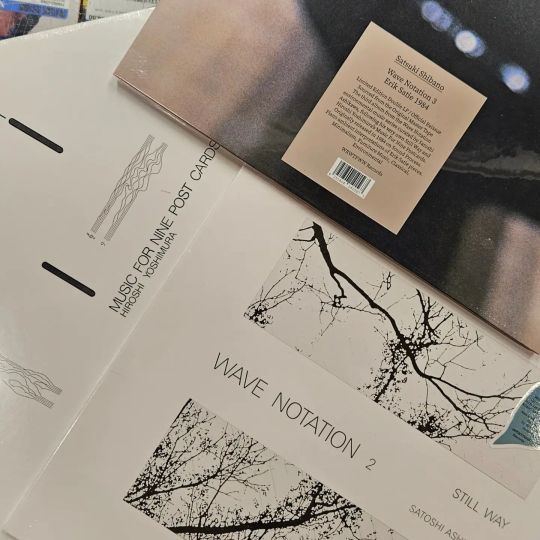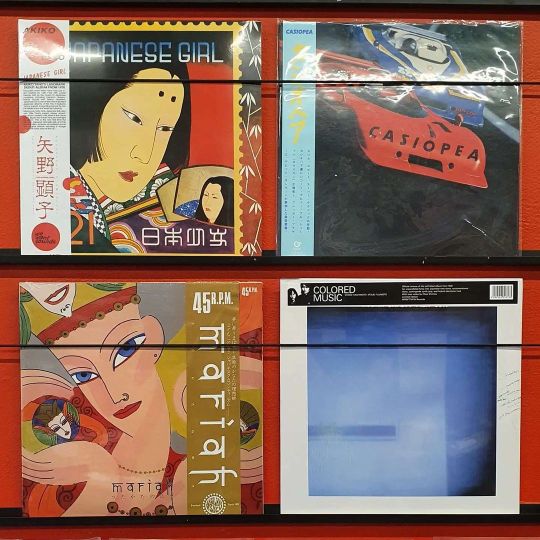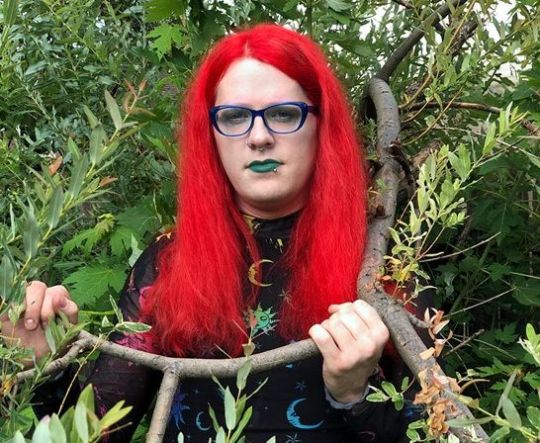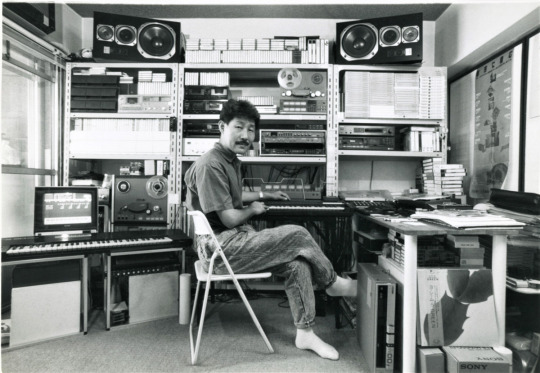#kankyō ongaku
Audio
The Kyoto Connection - The Flower, the Bird and the Mountain - more New Age, an explicit homage to Kankyō Ongaku, built on recordings by Masafumi Komatsu (Isle of Jura)
During the late 2010s, music lovers around the world began obsessively listening to increasingly esoteric albums on Youtube. More often than not, they’d leave the browser on autoplay. This was how Facundo Arena, the composer and producer behind The Kyoto Connection, discovered the technonaturalistic pleasures of Kankyō Ongaku (environmental music), a distinctly Japanese interpretation of European, British and American minimalist composition and ambient music. “It was a kind of algorithmic magic,” he says.
Upload by upload, the utopian music of Hiroshi Yoshimura and his 80s Japanese contemporaries transported Facundo back to his childhood. When he was five, his father placed him in karate lessons and began watching martial arts movies with him. From those early experiences, Facundo became fascinated Japanese history, tradition, and culture, particularly that of Kyoto - the cultural capital of Japan. Kankyō Ongaku reminded him of hearing the sounds of Japanese folkloric instruments as a young boy, and suddenly, the way the influence of Japan had manifested in his music made sense. “I had the sensation that for many years, I’d been doing something similar to the style,” he explains.
Inspired, Facundo used an iPad and an old Akai cassette deck to record Postcards, his homage to Japanese minimalism and Kankyō Ongaku. By this stage, he was twelve years deep with The Kyoto Connection, the musical project he launched in 2005 in his hometown of Buenos Aires, Argentina. Over that late 2000s and 2010s, Facundo, later on joined by collaborators Rodrigo Trado (drums) and Jesica Rubino (vocals, now his wife) released numerous D.I.Y albums. Project by project, they followed the threads between 80s synth-pop, ambient, new age, house, techno and acoustic composition.
Postcards introduced The Kyoto Connection to listeners around the world and brought Facundo into our orbit. During Argentina’s covid lockdown, Facundo received a set of soundscapes recorded in Kyoto by the Japanese musician and sound designer Masafumi Komatsu. Over several insular months, he decorated them with synthesisers, samples and subtle rhythms, creating The Kyoto Connection’s next album, The Flower, The Bird and the Mountain to be released via Isle Of Jura offshoot Temples Of Jura.
Ostensibly made up of twelve distinct tracks, listening to The Flower, The Bird and the Mountain feels more akin to spending calm, meditative time in twelve specific environments. Although the foundations they rest on are recordings made in geographic locations around Kyoto, Facundo has yet to visit Japan. As a result, the landscapes he paints sit somewhere between fiction and fact, richly pictorial sonic imagination juxtaposed with echoes of reality. Regardless, as his bubbling melodies and glistening synthesisers glide against Masafumi Komatsu's recordings, Facundo guides us into a blissful zone of tranquillity well worth spending time within.
#The Kyoto Connection#Kankyō Ongaku#ambient#electronic#new age#isle of jura#argentina#2022#Masafumi Komatsu
6 notes
·
View notes
Text
.just rediscovered what genre of music i was tripping on while on acid and i just got the weirdest flashback
#it’s called environmental music or kankyō ongaku#sounds like bubbles and wind chimes#but anyways i had a terrible acid trip finding that music was the only good part abt it
1 note
·
View note
Text

Kankyō Ongaku 環境音楽 (1980-1990)
2 notes
·
View notes
Text
A-T-4 055 Satsuki Shibano - Erik Satie (France 1866-1925)
I own one musician/band t-shirt and that's for Erik Satie. I'm gutted because in my middle age I'm getting a bit big to wear it, perhaps I should do what Satie did for a while (as did Homer Simpson) and dress up in priestly dress. I adore Erik Satie he was a true eccentric and a leading figure in the French avant-garde comparable to playwright Alfred Jarry and poet Guillaume Apollinaire. The three all contributed to early 20th century artistic movements such as Dada and Surrealism but Satie is also seen as the father of modern ambient music
Satie as ambient music pioneer is what we're interested in here and 環境音楽, or, environmental music, or, kankyō ongaku. I'm a little sceptical the phrase kankyō ongaku is a bit like hygge as in its invention is relatively recent and has been widely popularised by articles and publishers. The Danish tourism board is thoroughly invested in hygge but I wonder if you ask a Japanese person what kankyō ongaku is they'd give you a strange look (similar to the bemusement over city pop)
Anyway in 2019 Light In The Attic (LITA) asked Spencer Doran to compile Kankyō Ongaku (Japanese Ambient, Environmental & New Age Music 1980 - 1990). Spencer Doran is from Portland, USA, in the early 2000s he released albums in Japan inspired by Japanese environmental music by the likes of Hiroshi Yoshimura or Midori Takada and many others. 2010 Doran produced a mix titled Fairlights, Mallets And Bamboo Fourth World Japan, Years 1980-1986 for Root Strata's Blog. The mix and its follow up are prototypes of the LITA compilation Kankyō Ongaku. I really wanted the Kankyō Ongaku compilation but I remember the vinyl version being so expensive when it came out (hipster prices for hipster vinyls) so I never picked it up which means I've not read Spencer Doran's sleeve notes, I have read some of the interviews Doran did to promote the comp tho. I associate the phrase Kankyō Ongaku with Doran and LITA, it's the only place I've heard it
Through Doran I read about the Satie Crazy in Japan and according to him Kankyō Ongaku and the Satie Crazy began with a series of Erik Satie concerts that took place in Japan in 1975. 13-years earlier in 1962 John Cage performed a series of concerts held in Japan, Japanese media came up with the buzzword Cage Shock to report the reception. An avant-garde existed in Japan before this moment but Cage Shock was a transformative moment. I think Doran misses the connection between John Cage and Erik Satie when looking for why Erik Satie resonates with the Japanese so much. Cage isn't coy when attributing Satie's influence on Minimalism (especially 1893's Vexations), I think he's even got so far as to call Satie the father of Minimalism. It was 1969 John Cage produced Cheap Imitation for piano. This piece is based on Socrate by Erik Satie and created using the I Ching (an early example Cage using East Asian philosophical thought to create his work). Cage would base other pieces on works by Erik Satie throughout his career (especially throughout the 1970s). At least some of Erik Satie's popularity in Japan comes through John Cage
Satsuki Shibano - Erik Satie (France 1866-1925) is the third and final instalment of the Wave Notation series released in Japan by Sound Process. Sorry I've not written about the pianist as she's brilliant, this was also her debut. In 2019 Satsuki Shibano did a European tour with Spencer Doran's Visible Cloaks
It's easy to find recordings of Erik Satie but popular culture tends to focus on 1888's Gymnopédie No. 1, and more increasingly 1890s Gnossienne No. 3 - neither are in this collection
youtube
Tracklist is here
1 note
·
View note
Text

With the recent re-issue of Satsuki Shibano's "Erik Satie 1984" on the excellent Wrwtfww Records, the entire Wave Notation series is now available again for the first time in nearly 40 years!
Curated by Japanese musician Satoshi Ashikawa and released on his own Sound Process record label, the sound-defining Wave Notation environmental music series featured 3 influential Japanese albums released between 1982 and 1984. The aforementioned "Erik Satie 1984" by Satsuki Shibano follows Ashikawa’s own "Still Way" (1982) and Hiroshi Yoshimura's "Music For Nine Postcards" (1982). All 3 albums are defining markers of the Kankyō Ongaku movement and remain amongst the most influence Japanese ambient releases of all-time.
- Hiroshi Yoshimura - Music For Nine Post Cards - $55
- Satoshi Ashikawa - Still Way - $50
- Satsuki Shibano – Erik Satie 1984 - $85 (2xLP)
#wavenotation#hiroshiyoshimura#satoshiashikawa#satsukishibano#kankyoongaku
0 notes
Photo

SSWAN don an invisible cloak for a debut of searing improvisation and sensitive listening on 577 Records, Taro Nohara blends elements of downtempo and jazz for his own suspended take on kankyō ongaku, Dawn Richard's boundless vocals sway over the lithe arrangements of Spencer Zahn on the first movement of an album conceived as a love letter to New Orleans, and with her overbow violin in tow Laura Cannell and her inimitable drone break the silence of St Andrew's Church in Raveningham. Laila Sakini and the poet Lucy Van return with an expanded and remastered edition of Figures, adding rough desires and tall trees to the enveloping dusk-clad thicket, and tracks by Enumclaw, Bill Orcutt, and Cole Pulice also feature in the latest roundup of best new music.
https://culturedarm.com/tracks-of-the-week-03-09-22/
#music#new music#svaneborg kardyb#laura cannell#patrick shiroishi#chris williams#jessica ackerley#luke stewart#jason nazary#sswan#mansur brown#dawn richard#spencer zahn#sam wilkes#jacob mann#cole pulice#open mike eagle#enumclaw#laila sakini#lucy van#cosima#tsha#clementine douglas#jazz#contemporary classical#folk#drone#ambient#fourth world#electronic
0 notes
Photo

Takashi Kokubo - Quiet Inlet (from Oto No Wa: Selected Sounds of Japan 1988-2018, Music for Dreams 2020)
#takashi kokubo#quiet inlet#oto no wa#selected sounds of japan#1988-2018#music for dreams#dr. rob#max essa#ken hidaka#balearic#dream music#ambient#environmental music#kankyō ongaku#lullaby#ocean sounds#lapping waves#island#polaroid#blue#sky#horizon#ripples#sun lounge#octagon eyes#2020
17 notes
·
View notes
Video
youtube
An amazing album
…and a pretty great article to read while you listen about how YouTube’s algorithm inadvertently boosted his tunes!
https://www.abc.net.au/news/2019-08-06/hiroshi-yoshimura-from-internet-obscurity-to-youtube-sensation/11366386
#hiroshi yoshimura#wet land#ambient music#ambient electronic#japanese ambient#youtube algorithms#kankyō ongaku
3 notes
·
View notes
Audio
Dialect | Ringing the Web
#@ everyone (all two of you) who lived for the 2019 smash hit ‘’Kankyō Ongaku: Japanese Ambient Environmental & New Age Music 1980-1990‘‘#and/or anything Visible Cloak's done#this album 👌#sweet dreams
4 notes
·
View notes
Audio
Danny Scott Lane - Wave to Mikey - “Equal parts avant-garde composition, instrumental city-pop, ambient, Kankyō Ongaku (environmental music) and Fourth World music” i.e. made specifically to be featured here :)
Wave to Mikey, the fourth album from the Los Angeles-based actor, musician and photographer Danny Lane is a nocturnal, neon-lit ode to the friendships that shape us. “I made this album for my friend Mikey from back home,” Danny explains. “We were pretty much inseparable for a large part of our lives, and our musical and social minds were always in sync in a special way. Then with age, we drifted apart, especially since I moved to Los Angeles. This album is just a little wave hello to an old friend and a kindred spirit.”
Equal parts avant-garde composition, instrumental city-pop, ambient, Kankyō Ongaku (environmental music) and Fourth World music, Wave to Mikey is an impressionistic and reflective cycle of eleven richly detailed memory portraits. Throughout the album, the influence of Jon Hassell, Arthur Russell, Hiroshi Yoshimura and Yellow Magic Orchestra hangs in the air like late-night mist, adding character but never overshadowing the rhythmic ambience of Danny’s musical visions.
Here at Glossy Mistakes, Wave To Mikey marks our second contemporary album release, following on from Evenings by Japanese composer Metoronori. We’re proud to be able to present Danny, Metoronori and other modern musicians' work alongside reissues of classic works from Stevia aka Susumu Yokota, Akira Ito, Yuji Toriyama & Ken Morimura, and Takashi Kokubo.
Danny Scott Lane: Keyboard, synthesizers, bass, guitar, percussion, field recordings.
E Talley II: flute
Joseph Shabason: Saxaphone
John Carroll Kirby: additional keys on Paid Homage, Buck Shorter, Thinking of Quincy, East, West.
#Danny Scott Lane#new age#electronic#fourth world#balearic#jazz#fusion#city pop#2022#glossy mistakes
11 notes
·
View notes
Text
from Kankyō Ongaku: Japanese Ambient, Environmental & New Age Music 1980-1990

2 notes
·
View notes
Audio
Hiroshi Yoshimura, who has become one of the most recognizable figures of kankyō ongaku (environmental music), was a scholar of sound and music that considered study to be just as important as creating, much like his close friend Satoshi Ashikawa. Throughout his long career, his music has been featured in advertisements for makeup, packed in with cosmetics purchases, on the floor of department stores, and as art installations. GREEN, which is an algorithmic favorite and a work Yoshimura considered to be one of his best, was recorded in his home studio in the mid-’80s. The album was created with a Yamaha FM synthesizer, chosen for its exceptionally clear and defined tones. Yoshimura writes for the liner notes that the title was chosen to represent “the comfortable scenery of the natural cycle.”
- Shy Thompson
4 notes
·
View notes
Video
youtube
#Kankyō Ongaku: Japanese Ambient Environmental & New Age Music 1980-1990#Satoshi Ashikawa#Still Space#music#ambient
0 notes
Photo

Maybe it's time we get a dedicated Japanese section? 😏 .... until then, you can always find a varied selection of re-issues and new releases from Japanese artists spread across the Jazz, Soul/Funk, Folk, Ambient and New Wave sections. Some direct imports from Japan, others via great U.S. and EU labels such as @wewantsounds, @lightintheatticrecords, @wrwtfww etc. Here's what we have in-stock now! Akiko Yano - Japanese Girl $55 Casiopea - s/t $90 Mariah - Utakata No Hibi (2xLP) $65 Colored Music - s/t $45 Hiroshi Yoshimura - Green (Colour) $60 Hiroshi Yoshimura - Music For Nine Postcards $55 Satoshi Ashikawa - Still Way $50 Motohiko Hamase - Notes Of Forrestry $50 Takehisa Kosugi - Catch - Wave $55 Ryuichi Sakamoto - Hidari Udo No Yume (Deluxe 2xLP) $65 Logic System - Venus $55 Hiroshi Sato - Orient $55 The Mystery Kindaichi Band - The Adventures Of... $50 George Otsuka Quintet - Loving You George $50 Ryo Fukui - Mellow Dream $48 Ryo Fukui - In New York $60 Ichiko Aoba - Kamisori Otome $75 Ichiko Aoba - Origami $75 Ichiko Aoba - Utabiko $75 Ichiko Aoba - 0 (2xLP) $100 Ichiko Aoba & Mahito The People - Nuuamm $85 Sachiko Kanenobu - Misora $55 Takeshi Terauchi - Nippon Guitars $38 Uyama Hiroto - A Son Of The Sun (2xLP) $100 Nujabes - Metaphorical Music (2xLP) $100 Nujabes - Modal Soul (2xLP) $100 (OST) Kenji Kawai - Ghost In The Shell OST $40 (OST) Hikaru Utada - One Last Kiss OST $48 (OST) Ryuichi Sakamoto - Black Mirror: Smithereens $40 V/A - Nippon Girls 2: Japanese Pop, Beat & Rock'N'Roll 1966-70 $50 V/A - Tokyo Dreaming (2xLP) $65 V/A - Kankyō Ongaku (Japanese Ambient, Environmental & New Age Music 1980 - 1990) (3xLP) $110 *We're also expecting re-stocks in the coming weeks of these titles (and probably more...) Ryo Fukui - Scenery Yukihiro Takahashi - Saravah! Hiroshi Suzuki - Cat Geinoh Yamashirogumi - Akira Symphonic Suite OST V/A - Evangelion Finally OST V/A - Wamono A To Z (Japanese Jazz Funk & Rare Groove 1968-1980) (at Beatdisc Records) https://www.instagram.com/p/CS_QdunhwLz/?utm_medium=tumblr
1 note
·
View note
Text
Nonlocal Forecast — Holographic Universe(s?)! (Hausu Mountain)

Holographic Universe(s?)! by Nonlocal Forecast
Angel Marcloid is a restless experimenter and collagist whose work as Fire-Toolz mashes a wide-range of electronic and acoustic elements into a thrilling often alienated mélange. Under her Nonlocal Forecast guise she conjures her fascination with Yacht Rock, jazz fusion and Kankyō Ongaku, the Japanese environmental music of the 1980s, into a mix that treads a razor thin line between homage and parody with utter seriousness to form new fractal shapes that distort and repurpose tropes even while celebrating them. COVID lockdown appears to have triggered both a questions about what “normal life” means and a wave of musical nostalgia across the world as people seek comfort and consolation in the familiar. Although recorded during 2019 Holographic Universe(s?)! interrogates and celebrates the yearning for simpler times when fans, united by their favorite radio stations as much as their favorite bands, were happy to share common information sources and pursue niche interests. Marcloid adroitly but gently subverts the genres she so clearly loves and brings out the blitheness, empty technical sophistication and inherent oddity of much of this music.
Marcloid builds these universes with computer, midi controller and guitar. The programmed drums are immediately familiar, the keyboards likewise and her guitar solos are memory triggers for cadences that were, whether loved or hated, seemingly ubiquitous. Echoes of Michael Brecker decorate “Interactions Between Brains & The Foam of Potentiality” on which Bhob Rainey garnishes a tricksy prog ballad with a lyrical solo straight from the 1985 AOR charts and “Space-Time = Infinity-Eternity Objectified” with Ian Smith’s saxophone beaming in from the lost world of 8-tracks and topiary ‘tashes, smoothing its way through a satin cloud of billowing synths and beanbag drums. “The Bubbling Up Of Duality On An Autumn Night By A Forest Stream” is as comforting and disquieting as the title suggests, gentle acoustic guitar over building keyboards, is that a lamb bleating lost and lonely in the distance? gated drums set the stage for the big electric solo that shakes its decadent fist as the world turns, indifferent.
Marcloid mines memory to engage experience and dig into duality. Whether balm or diversion, music remains Pavlovian, beyond articulation if not reproach. Holographic Universe(s?)! dissects the gap between what we know in the here and now and what we may have dreamt of becoming, enjoy it in two dimensions as an entertainment and a third as inner space exploration. Either way it is a transporting 42 minutes.
Andrew Forell
#nonlocal forecast#holographic universe#hausu mountain#andrew forell#albumreview#dusted magazine#Angel Marcloid#electronica#jazz fusion#ambient
2 notes
·
View notes
